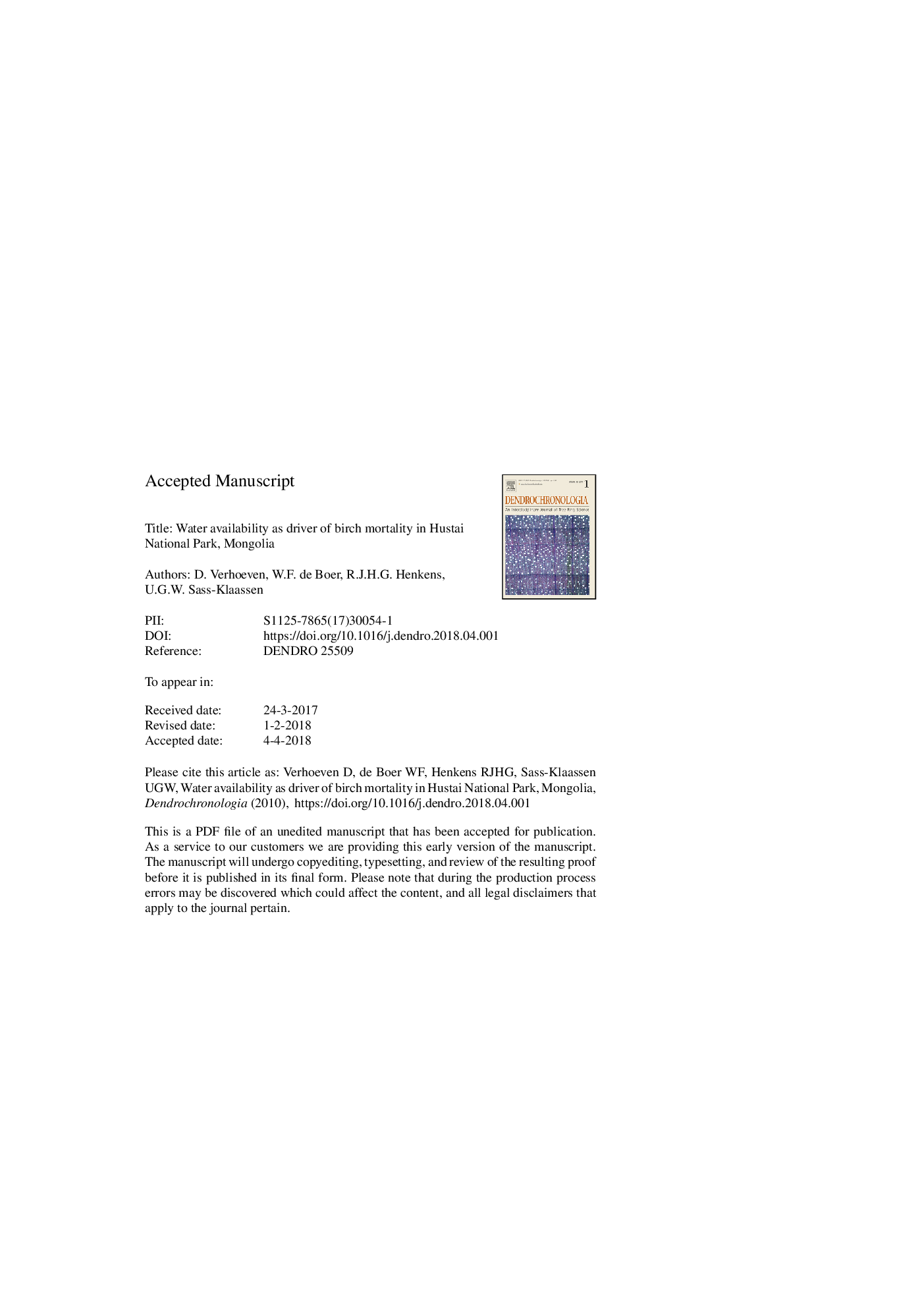| Article ID | Journal | Published Year | Pages | File Type |
|---|---|---|---|---|
| 6541280 | Dendrochronologia | 2018 | 24 Pages |
Abstract
Trees in the forest-steppe ecotones face stress due to reduced water availability as a consequence of more extreme seasonal fluctuations in precipitation and temperature. Together with browsing pressure this can hinder tree growth, tree regeneration and competition between trees and grasses. We studied the impact of both stress factors on the mortality of birch trees in two forest sites at Hustai National Park, Mongolia, by applying tree-ring research to determine growth-limiting factors and assessing browsing pressure on young and adult birch. We expected warm and dry summer conditions as main growth limiting factor. Moreover, we expected a positive relation between deer density and tree mortality with browsing mainly affecting smaller trees with a low diameter at breast height (DBH). We found that the growth in both birch populations is mainly driven by winter precipitation and - to a lesser extent - negatively affected by high summer temperature. This suggests that water availability as defined by soil moisture, especially at the beginning of the growing season is crucial for birch growth in our study area. For mortality we found significant differences between both populations, but no significant relationship with deer density. In plots with high mortality rates mean tree height of the remaining living trees decreased. These results suggest that under expected climate change with declining annual precipitation rates, the birch forest of Hustai National Park is converting into a steppe ecosystem, like described for other forest ecosystems in this ecotone.
Related Topics
Physical Sciences and Engineering
Earth and Planetary Sciences
Atmospheric Science
Authors
D. Verhoeven, W.F. de Boer, R.J.H.G. Henkens, U.G.W. Sass-Klaassen,
